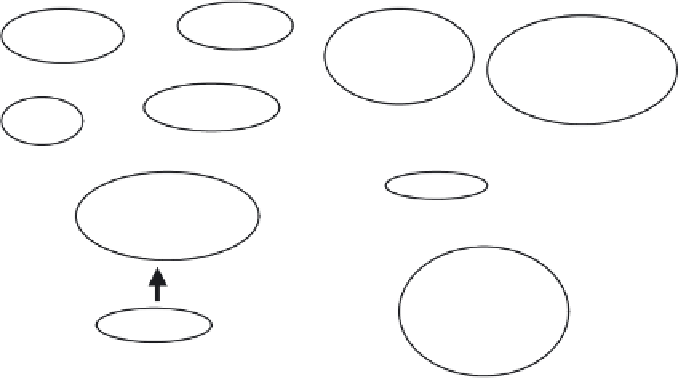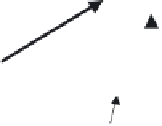Environmental Engineering Reference
In-Depth Information
Both top-down and bottom-up control of primary production can oc-
cur in streams, and in many cases both operate simultaneously (Rosemond
et al.,
1993). Clear examples of the trophic cascade have been documented
for streams. In some California streams (Fig. 19.10), exclosure of fish re-
sults in decreases in
Cladophora
(a filamentous green alga) biomass be-
cause predation on midge larvae is decreased, and the midge larvae sup-
press
Cladophora
(Power, 1990a). These results are consistent with the
view that even numbers of trophic levels lead to high producer biomass.
Research on the herbivorous stoneroller
(Campostoma anomalum)
and piscivorous bass (
Micropterus
spp.) suggests that bass have a top-
down effect on primary producers in small prairie streams. Pools with bass
have few stonerollers and high algal biomass, whereas pools without bass
have low algal biomass and high numbers of stonerollers. Finally, when
bass are tethered in a pool, algae proliferate only in the areas around the
bass, but not outside their reach (Power and Mathews, 1983). Grazing by
the stonerollers leads to lower algal biomass, more cyanobacteria, less bac-
teria, higher invertebrate density, and less particulate organic material, so
the effects of this trophic cascade extend to basic stream ecosystem prop-
erties (Gelwick and Matthews, 1992).
Control of grazers does not always have the anticipated effects in
streams. Armored catfish (Loricariidae) are common grazers in the Rio Fri-
joles in Panama. Exclosure of the catfish leads to an initial increase in ben-
thic algal biomass, but after a few weeks, enclosures are smothered with
sediments (Power, 1990b). In this case, a secondary effect (sediment resus-
pension or decrease in sediment trapping) leads to results that would not
be predicted by a straight trophic view of stream ecosystems.
A
B
Steelhead
Adult roach
Predatory
insects
Roach and
Stickleback fry
Roach and
Stickleback fry
Predatory
insects
Midge larvae
Midge larvae
Benthic
algae
Benthic
algae
FIGURE 19.10
Summary of effects of enclosure (A) and exclosure (B) on predatory fishes
[roach,
(Hesperoleucas symmetricus)
and steelhead
(Oncorhynchus mykiss)
], roach and stick-
leback
(Gasterosteus aculeatus)
fry, invertebrate predators (lestids), midge larvae
(Pseudochi-
ronomus richardsoni),
and benthic algae (
Nostoc
and
Cladophora
). Size of oval represents
amount of biomass at each trophic level (data from Power, 1990a).









Search WWH ::

Custom Search